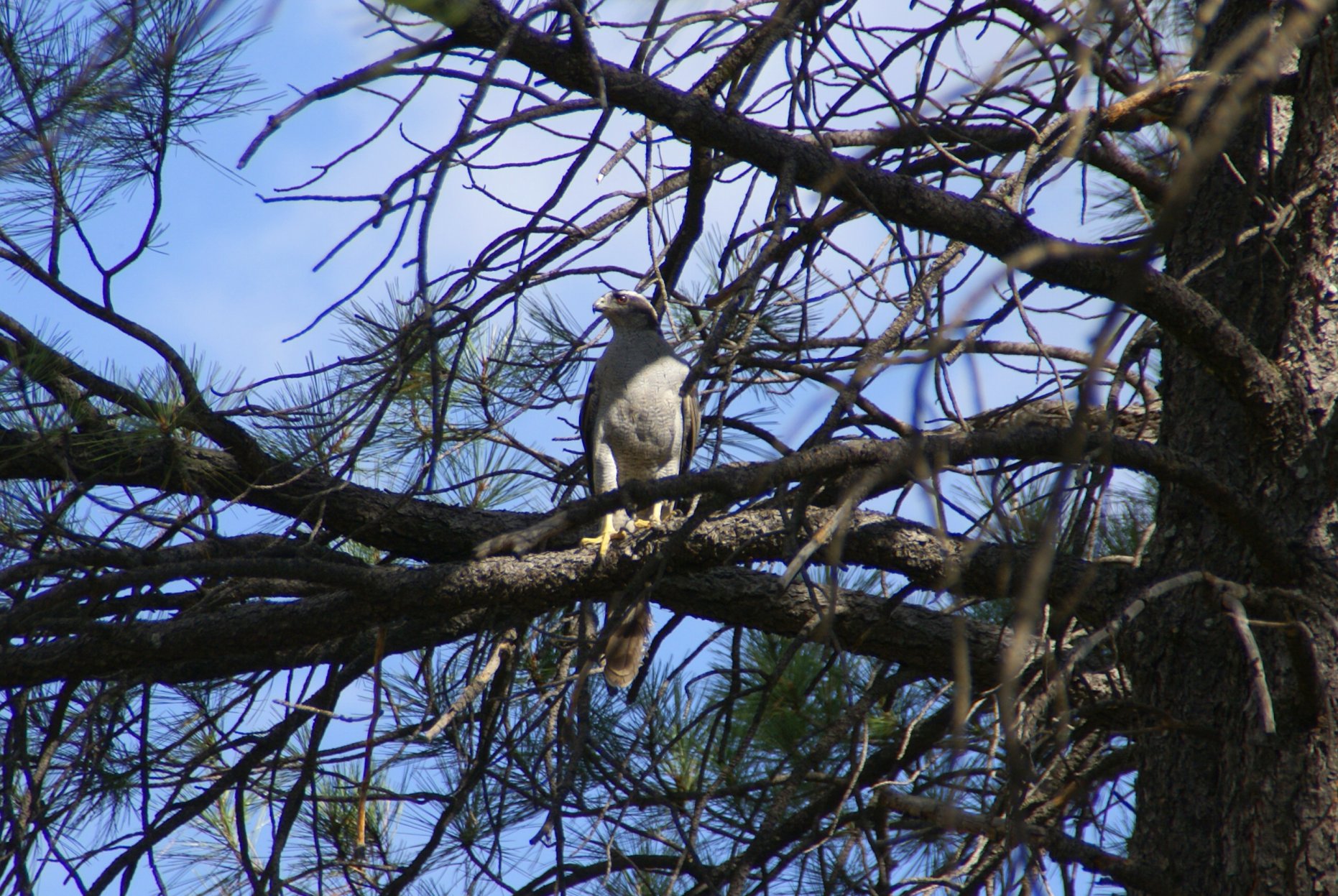|
Astur (bird)
''Astur'' is a genus containing hawks, goshawks and sparrowhawks in the family Accipitridae. The species were formerly placed in the genus '' Accipiter''. Taxonomy The genus ''Astur'' was introduced in 1799 by the French naturalist Bernard Germain de Lacépède. The type species was later designated by the Irish zoologist Nicholas Vigors as ''Falco palumbarius'' Linnaeus, 1758, now considered as a junior synonym of ''Falco gentilis'' Linnaeus, 1758, the Eurasian goshawk. The name is from Latin ''astur'', ''asturis'' meaning "hawk". Species now placed in this genus were formerly assigned to the genus '' Accipiter''. Molecular phylogenetic studies found that ''Accipiter'' was polyphyletic and in the subsequent rearrangement to create monophyletic In biological cladistics for the classification of organisms, monophyly is the condition of a taxonomic grouping being a clade – that is, a grouping of organisms which meets these criteria: # the grouping contains its own mos ... [...More Info...] [...Related Items...] OR: [Wikipedia] [Google] [Baidu] |
Eurasian Goshawk
The Eurasian goshawk (; ''Astur gentilis'', formerly ''Accipiter gentilis'') is a species of medium-large bird of prey in the Family (biology), family Accipitridae, a family which also includes other extant diurnal raptors, such as eagles, buzzards and harrier (bird), harriers. It was formerly placed in the genus ''Accipiter''. It is a widespread species that inhabits many of the temperate parts of Eurasia. Except in a small portion of southern Asia, it is the only species of "goshawk" in its range and it is thus often referred to, both officially and unofficially, as simply goshawk. It is mainly resident bird, resident, but birds from colder regions bird migration, migrate south for the winter. As of 2023, goshawks found in North America are no longer considered be conspecific, but are now designated as the American goshawk (''Astur atricapillus''). Taxonomy The Eurasian goshawk was Species description, formally described in 1758 by the Swedish naturalist Carl Linnaeus in the 10 ... [...More Info...] [...Related Items...] OR: [Wikipedia] [Google] [Baidu] |
Bicolored Hawk
The bicolored hawk (''Astur bicolor'') is a species of bird of prey in the family Accipitridae. It is found in forest, woodland, second growth, plantations, and wooded savanna in southeastern Mexico, Central America, and northern and central South America (as far south as northern Argentina). Though generally uncommon, it is the most common species of '' Astur'' in most of its range, but it does not occur at altitudes above such as the highest parts of the Andes. Taxonomy The bicolored hawk was formally described in 1817 by the French ornithologist Louis Vieillot under the binomial name ''Sparvius bicolor''. He specified Cayenne in French Guiana as the type locality. The bicolored hawk was formerly placed in the large and diverse genus '' Accipiter''. In 2024 a comprehensive molecular phylogenetic study of the Accipitridae confirmed earlier work that had shown that the genus was polyphyletic. To resolve the non-monophyly, ''Accipiter'' was divided into six genera. The genus ... [...More Info...] [...Related Items...] OR: [Wikipedia] [Google] [Baidu] |
Astur
Astur may refer to: *an inhabitant of the northwest of Hispania - see Astures *Astur (genus), a bird genus (sometimes included in the genus ''Accipiter'') * Astur (typeface) *Astur CF Astur Club de Fútbol is a Spanish football team based in Oviedo, in the autonomous community of Asturias. Founded in 1923 and later re-founded in 1949, it plays in , holding home matches at '' Estadio Hermanos Llana'', which has a capacity of 2, ..., a Spanish football club * Manuel Astur (born 1980), Spanish writer and journalist {{disambiguation ... [...More Info...] [...Related Items...] OR: [Wikipedia] [Google] [Baidu] |
Astur Meyerianus
Meyer's goshawk (''Astur meyerianus'') is a species of bird of prey in the family Accipitridae. It is found in the Moluccas, New Guinea, the Bismarck Archipelago and the Solomon Islands. Its natural habitats are subtropical or tropical moist lowland forest and subtropical or tropical moist montane forest. This species was formerly placed in the genus ''Accipiter''. The common name commemorates Adolf Bernard Meyer (1840–1911), a German anthropologist and ornithologist who collected in the Dutch East Indies The Dutch East Indies, also known as the Netherlands East Indies (; ), was a Dutch Empire, Dutch colony with territory mostly comprising the modern state of Indonesia, which Proclamation of Indonesian Independence, declared independence on 17 Au .... References Meyer's goshawk Birds of the Maluku Islands Birds of prey of New Guinea Birds of the New Guinea Highlands Birds of the Bismarck Archipelago Birds of the Solomon Islands Meyer's goshawk Taxonomy articl ... [...More Info...] [...Related Items...] OR: [Wikipedia] [Google] [Baidu] |
Astur Atricapillus
The American goshawk (''Astur atricapillus'') is a species of raptor in the family Accipitridae. It was first described by Alexander Wilson in 1812. The American goshawk was previously considered conspecific with the Eurasian goshawk but was assigned to a separate species in 2023 based on differences in morphology, vocalizations, and genetic divergence. It was formerly placed in the genus ''Accipiter''. It is mainly resident, but birds from colder regions migrate south for the winter. In North America, migratory goshawks are often seen migrating south along mountain ridge tops at nearly any time of the fall depending on latitude. Distribution In North America, they are most broadly found in the Western United States, including Alaska, and western Canada. Their breeding range in the western contiguous United States largely consists of the wooded foothills of the Rocky Mountains and many other large mountain ranges from Washington to southern California extending east to central C ... [...More Info...] [...Related Items...] OR: [Wikipedia] [Google] [Baidu] |

